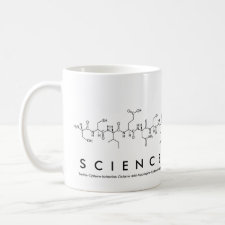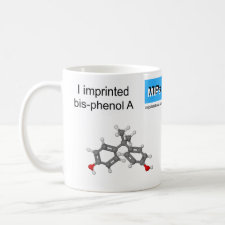
Authors: Zhao WR, Kang TF, Lu LP, Shen FX, Cheng SY
Article Title: A novel electrochemical sensor based on gold nanoparticles and molecularly imprinted polymer with binary functional monomers for sensitive detection of bisphenol A.
Publication date: 2017
Journal: Journal of Electroanalytical Chemistry
Volume: 786
Page numbers: 102-111.
DOI: 10.1016/j.jelechem.2017.01.003
Alternative URL: http://www.sciencedirect.com/science/article/pii/S1572665717300036
Abstract: In this paper, a novel molecularly imprinted electrochemical sensor was developed for the determination of bisphenol A (BPA). Au nanoparticles (AuNPs) were modified onto the surface of a glassy carbon electrode (GCE) by electrodeposition method. BPA was used as the template molecule, while 4-aminothiophenol (4-ATP) and chitosan (CS) were used as the binary functional monomers. After 4-ATP was modified on the AuNPs by self-assembly, electropolymerization was carried out by cyclic voltammetry (CV) in the presence of CS and BPA to produce molecularly imprinted polymers (MIPs). The prepared sensor was denoted as MIPs/AuNPs/GCE. The morphologies of the electrodes were characterized by scanning electron microscopy (SEM). The MIPs were characterized by Fourier transform infrared spectroscopy (FT-IR). The electrochemical performance of the imprinted electrochemical sensor was investigated by cyclic voltammetry and electrochemical impedance analysis (EIS) techniques in detail. The experimental results showed that the gold nanoparticles could increase the conductivity of the MIPs significantly. The imprinted electrochemical sensor was successfully applied to determine BPA by linear scan voltammetry (LSV). Under the optimal condition, the oxidation peak currents of BPA exhibit a well linear relationship toward the BPA concentrations in the range from 1.5 x 10-8 mol L-1 to 5.5 x 10-5 mol L-1, with a detection limit of 1.1 x 10-9 mol L-1 (S/N = 3) and a correlation coefficient of 0.9996. The sensor possesses good stability, selectivity and high sensitivity to BPA, which was successfully applied to detect BPA in actual samples such as plastic and milk. The recoveries were in the range of 97.6 - 106.5%
Template and target information: bisphenol A, BPA
Author keywords: Molecularly imprinted sensor, Binary functional monomers, electrochemical polymerization, gold nanoparticles, bisphenol A



Join the Society for Molecular Imprinting

New items RSS feed
Sign-up for e-mail updates:
Choose between receiving an occasional newsletter or more frequent e-mail alerts.
Click here to go to the sign-up page.
Is your name elemental or peptidic? Enter your name and find out by clicking either of the buttons below!
Other products you may like:
 MIPdatabase
MIPdatabase









